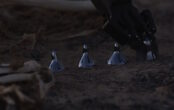[dropcap style=”font-size:100px; color:#992211;”]D[/dropcap]uuuuude! All the viruses you’ve ever encountered, in one log entry. Nostalgia hit, bigtime.
Remember the millennium bug! A classic. What about ‘Your PC is now stoned’? Ahh. Good times.
Alas, no. It’s just icky organic stuff. Boo.
With less than a drop of blood, a new technology called VirScan can identify all of the viruses that individuals have been exposed to over the course of their lives.
Researchers used the screening technique with 569 people from around the world and found that, on average, their participants had been exposed to about 10 viral species over their lifetimes. VirScan provides a powerful and inexpensive tool for studying interactions between the human virome — the collection of viruses known to infect humans, some of which don’t cause symptoms — and the immune system, which can be altered permanently by viral exposure.
Until now, blood tests that measured the indelible footprints left behind by viruses (in the form of antibodies released by the immune system) have been limited by the number of virus-antibody interactions they could screen for. To expand the coverage of such tests to identify a greater number of antibodies, George Xu and colleagues used a large dataset of peptides from 206 viral species, representing more than 1,000 different viral strains, to create a synthetic representation of all human viral peptides.
Samples from their diverse study participants, who hailed from four different continents, uncovered more than 106 million peptide-antibody interactions. Most people had been exposed to about 10 viruses, but at least a couple volunteers had encountered 84 viral species. These findings highlight conserved immune responses, or “public epitopes,” and indicate that individuals may release similar antibodies in response to the same virus — even though people are exposed to viruses at wildly differing rates.
Xu and his colleagues suggest that VirScan might also be adapted to study the antibody response to other members of the human microbiome, including bacteria, fungi, or protozoa.
Source: American Association for the Advancement of Science
Image: bycfotografem

Some of the news that we find inspiring, diverting, wrong or so very right.





















